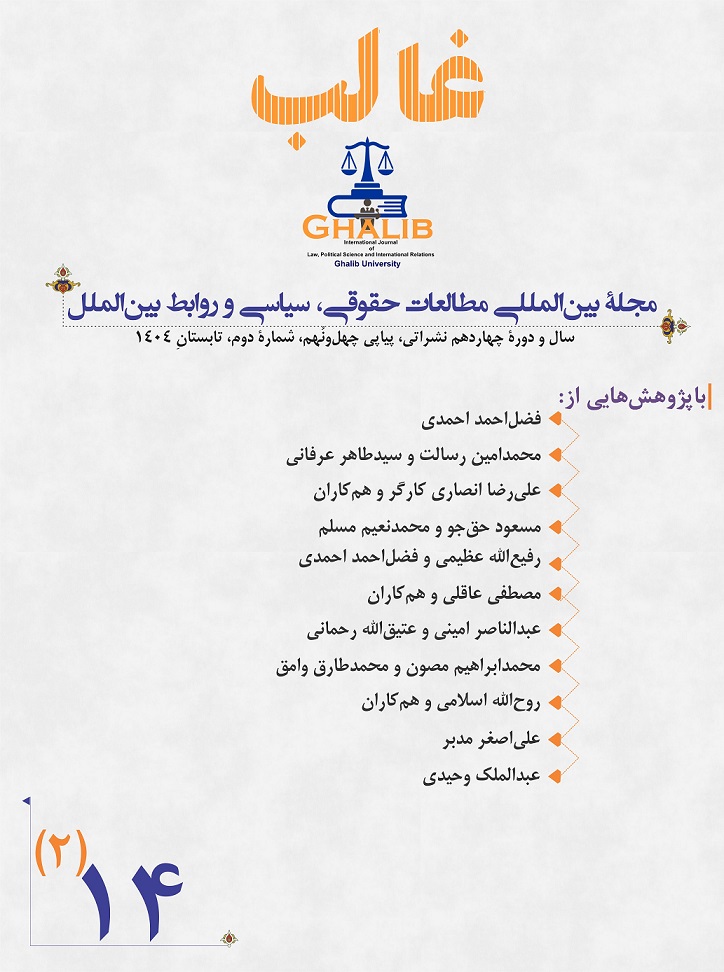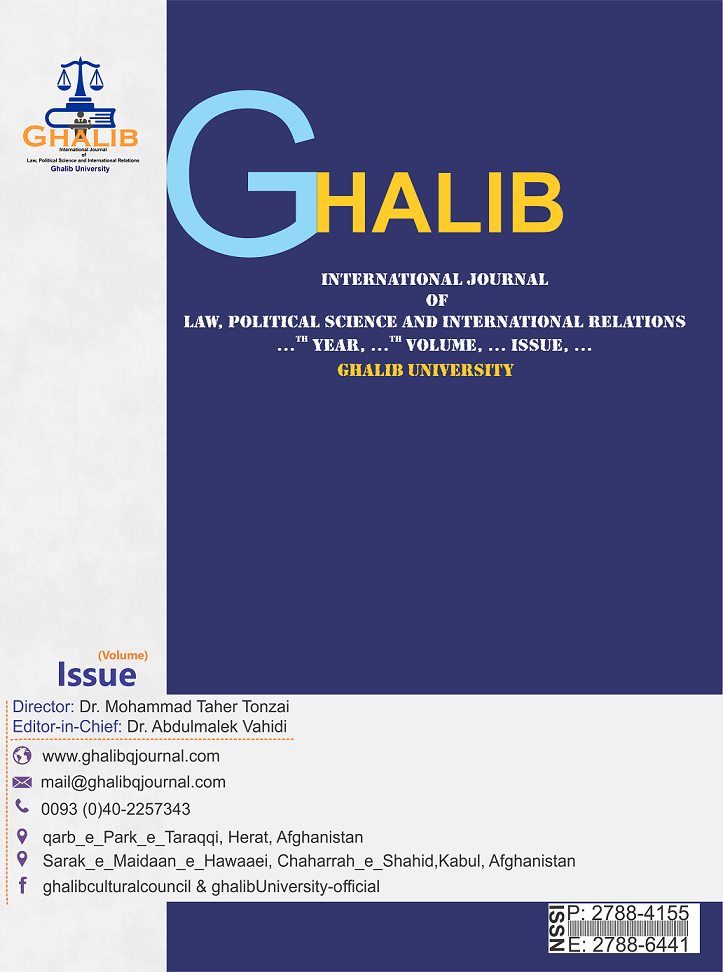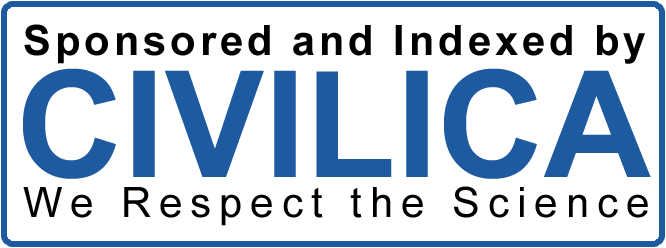Reform Strategies for Improving Oversight and Combating Financial Corruption
DOI:
https://doi.org/10.58342/ghalibqj.V.14.I.2.8Keywords:
financial corruption, anti-corruption, oversight structure, transparency, accountability, roots of corruptionAbstract
Financial corruption is one of the major challenges faced by administrative systems, which—manifesting in political, economic, and sometimes cultural and ethical dimensions—threatens the legitimacy of governance structures. A weak state capacity to address this issue can seriously hinder economic growth and development. In developing countries, financial corruption generates crises, particularly in political, social, and economic spheres, that necessitate fundamental reforms in economic and administrative processes. Transparency, the strengthening of oversight institutions, and legal reforms are essential requirements in this regard.This study aims to identify and examine the most effective factors for eliminating financial corruption within an oversight framework. It seeks to answer the question: Which factors and mechanisms can contribute to reducing financial corruption and improving the performance of oversight institutions? The findings—derived through a descriptive-analytical method based on library research—indicate that, in order to combat financial corruption effectively, addressing not only its symptoms but also its root causes is imperative. One of the key factors in reducing financial corruption is the strengthening of independent and transparent oversight structures capable of identifying and confronting the roots of corruption within administrative and executive systems.
References
الوانی، سید مهدی. (1388). مدیریت عمومی. چ 37. تهران: نشر نی.
براتی، نظام؛ زارعی، محمدحسین. (1395). «مجموعه مقالات همایش کنوانسیون سازمان ملل متحد برای مبارزه با فساد: بررسی نقش مشارکت مردم و جامعه مدنی در مبارزه با فساد». چاپ اول.
جزنی، نسرین. (1388). مدیریت منابع انسانی. چ ششم. تهران: نشر نی.
خدمتی، ابوطالب. (1393). مبارزه با فساد اداری با رویکرد اسلامی. تهران: پژوهشگاه حوزه و دانشگاه.
خضری، محمد. (1387). «آسیبشناسی روشهای مبارزه با فساد اداری در ایران». فصلنامة مطالعات راهبردی. 11(42). 813-826. https://quarterly.risstudies.org/article_925.html
دادگر، حسن؛ مصومینیا، غلامعلی. (1386). فساد مالی. چ دوم. تهران: کانون اندیشة جوان.
رفیعپور، فرامرز. (1386). سرطان اجتماعی فساد. تهران: شرکت سهامی انتشار.
زرگری، سیدمهدی. (1390). پیشگیری از بزهکاری. تهران: مؤسسة نگاه بینه.
صالحی، غلامرضا. (1391). راهبردهای مبارزه با فساد اداری. چ دوم. تهران: انتشارات جنگل.
عباسزادگان، سید محمد. (1383). فساد اداری. تهران: دفتر پژوهشهای فرهنگی.
فاضل، حمید. (1396). ظرفیتهای تمدن اسلام. چ دوم. تهران: مرکز بینالمللی ترجمه و نشر المصطفی.
متحدیان، رحیم. (1390). ارتقای سلامت اداری و مبارزه با فساد. تهران: شرکت فرآزما پردازش.
مصون، محمدابراهیم. (1400). آسیبشناسی ساختار نظارتی در پیشگیری از فساد مالی در ایران و افغانستان. پایاننامة دکتری. دانشگاه تهران، رشتة حقوق جزا و جرمشناسی.
مطهری، مرتضی. (1389). مجموعه آثار. ج 17. چ چهاردهم. تهران: بیجا.
منفرد، لیلا. (1395). فساد در نظامهای قضایی: گزارش سازمان شفافیت بینالملل در سال 2007. تهران: پژوهشگاه قوة قضائیه.
مؤسسة تحقیقاتی تدبیر اقتصاد. (1382). فساد مالی و اقتصادی: ریشهها، پیامدها، پیشگیری و مقابله: ریشهها و علل فساد مالی و اقتصادی در ایران. تهران: مؤسسة تحقیقاتی تدبیر اقتصاد.
نهرو، جواهر لعل. (1363). میعاد با سرنوشت. ترجمة محمود تفضلی. تهران: انتشارات توس.
References
Alvani, Seyyed Mehdi. (2009). General Management (37th ed.). Tehran: Ney Publishing. [In Persian]
Barati, Nezam; Zarei, Mohammad-Hossein. (2016). Proceedings of the Conference on the United Nations Convention against Corruption: Examining the Role of Public Participation and Civil Society in Combating Corruption (1st ed.). [In Persian]
Jazani, Nasrin. (2009). Human Resource Management (6th ed.). Tehran: Ney Publishing. [In Persian]
Khedmati, Abutaleb. (2014). Combating Administrative Corruption from an Islamic Perspective. Tehran: Research Institute of Seminary and University. [In Persian]
Khezri, Mohammad. (2008). “Pathology of Methods for Combating Administrative Corruption in Iran.” Strategic Studies Quarterly, 11(42), 813–826. https://quarterly.risstudies.org/article_925.html [In Persian]
Dadgar, Hassan; Masouminia, Gholamali. (2007). Financial Corruption (2nd ed.). Tehran: Kanoon Andisheh Javan. [In Persian]
Rafiee-Pour, Faramarz. (2007). The Social Cancer of Corruption. Tehran: Sherkat Sahami Enteshar. [In Persian]
Zargari, Seyyed Mehdi. (2011). Crime Prevention. Tehran: Negah-e Bineh Institute. [In Persian]
Salehi, Gholam-Reza. (2012). Strategies for Combating Administrative Corruption (2nd ed.). Tehran: Jangal Publications. [In Persian]
Abbaszadegan, Seyyed Mohammad. (2004). Administrative Corruption. Tehran: Office for Cultural Research. [In Persian]
Fazel, Hamid. (2017). The Civilizational Capacities of Islam (2nd ed.). Tehran: Al-Mustafa International Translation and Publishing Center. [In Persian]
Mottahadian, Rahim. (2011). Promoting Administrative Health and Combating Corruption. Tehran: Farazma Pardazesh Company. [In Persian]
Masoon, Mohammad-Ebrahim. (2021). Pathology of Supervisory Structure in Preventing Financial Corruption in Iran and Afghanistan. Doctoral Dissertation, University of Tehran, Department of Criminal Law and Criminology. [In Persian]
Motahhari, Morteza. (2010). Collected Works, Vol. 17 (14th ed.). Tehran: Bijā. [In Persian]
Monfared, Leila. (2016). Corruption in Judicial Systems: Report of Transparency International in 2007. Tehran: Judiciary Research Institute. [In Persian]
Tadbir-e-Eghtesad Research Institute. (2003). Financial and Economic Corruption: Roots, Consequences, Prevention and Confrontation: Roots and Causes of Financial and Economic Corruption in Iran. Tehran: Tadbir-e-Eghtesad Research Institute. [In Persian]
Nehru, Jawaharlal. (1984). Tryst with Destiny (Trans. Mahmoud Tafazzoli). Tehran: Tous Publications. [In Persian]
Downloads
Published
How to Cite
Issue
Section
License
Copyright (c) 2025 محمد ابراهیم مصون،محمد طارق وامق

This work is licensed under a Creative Commons Attribution 4.0 International License.













